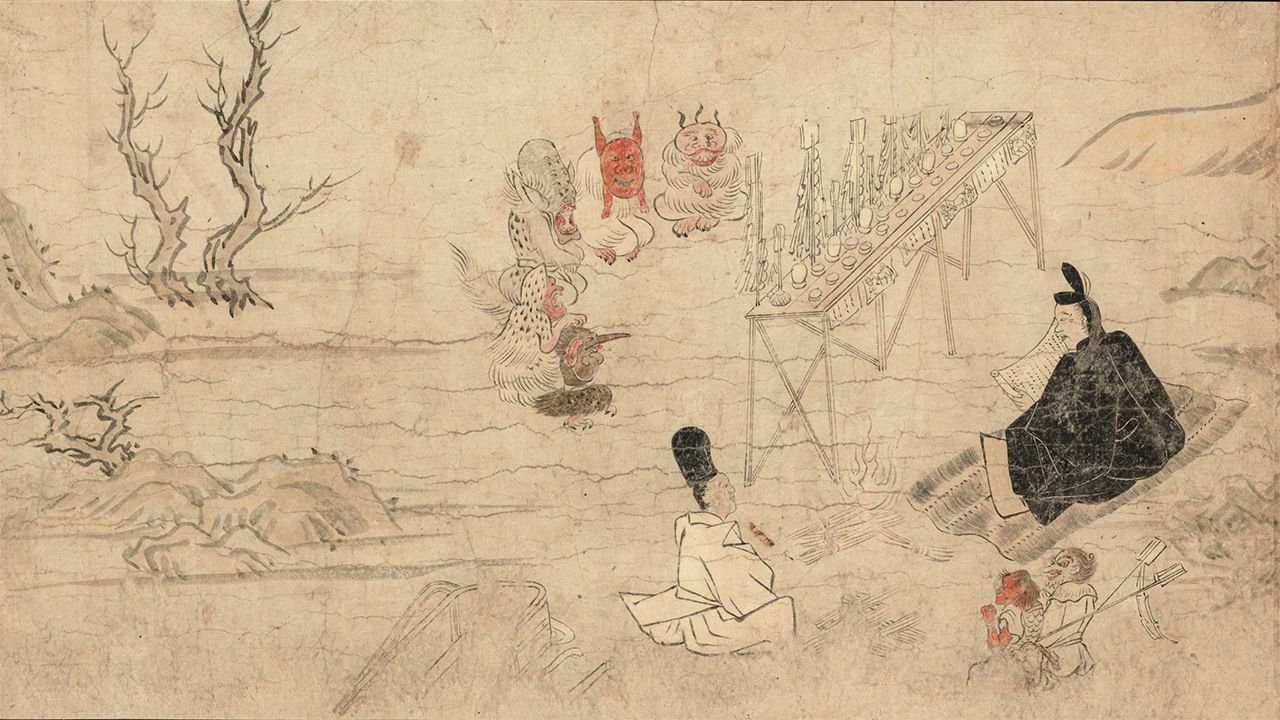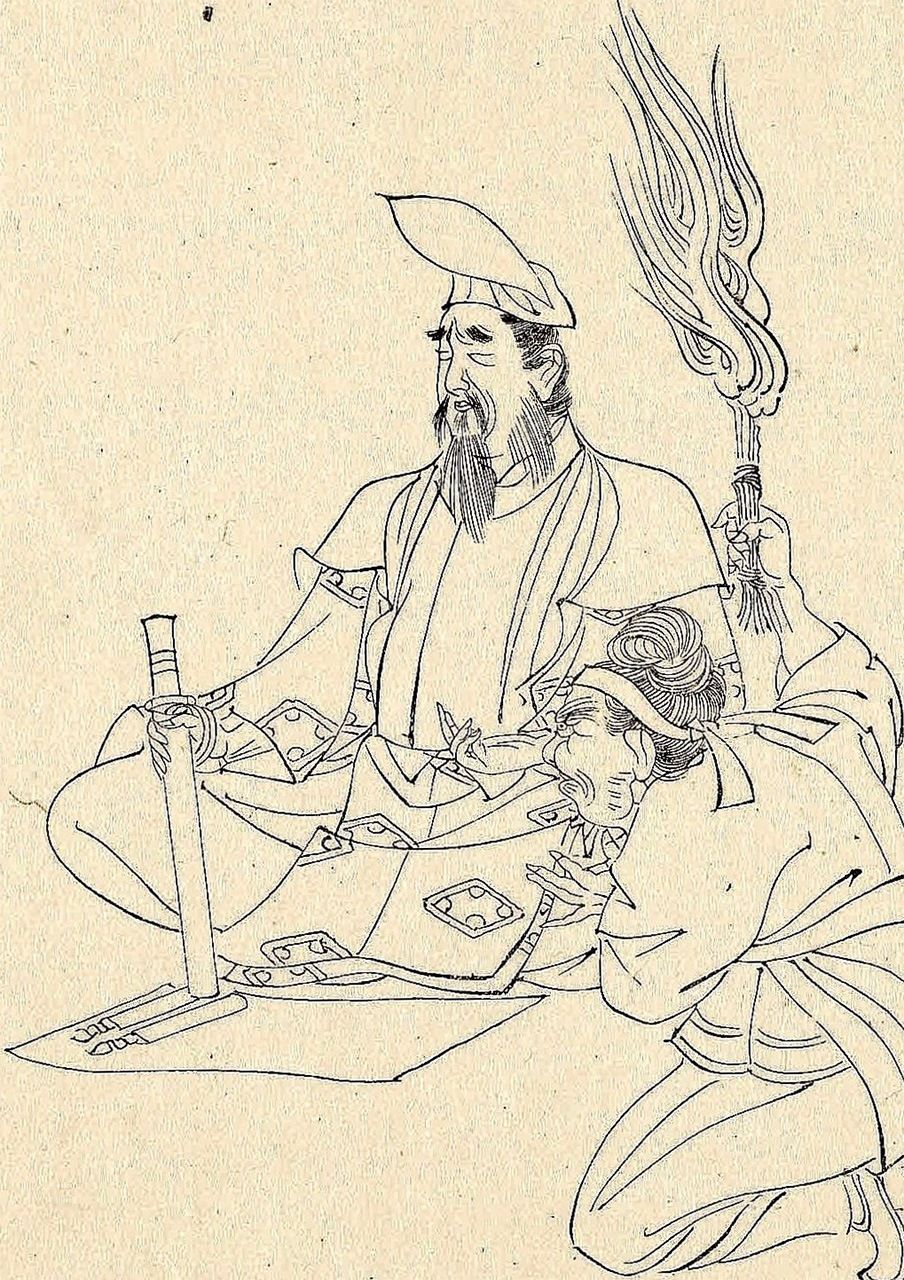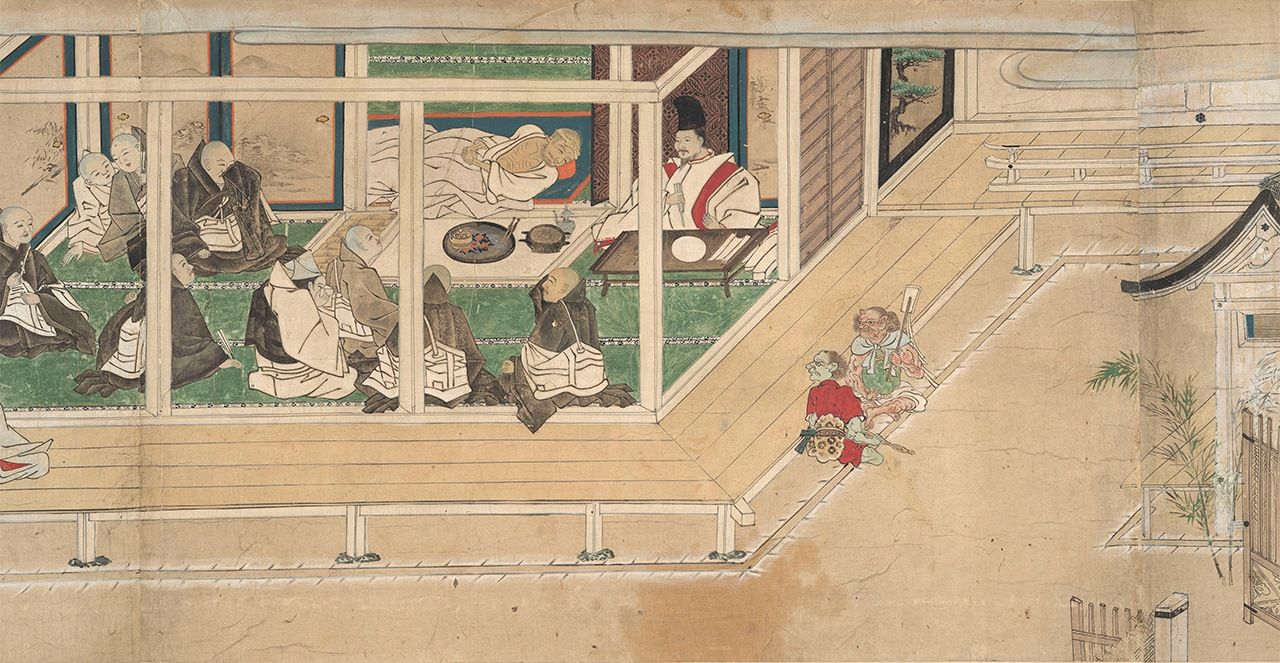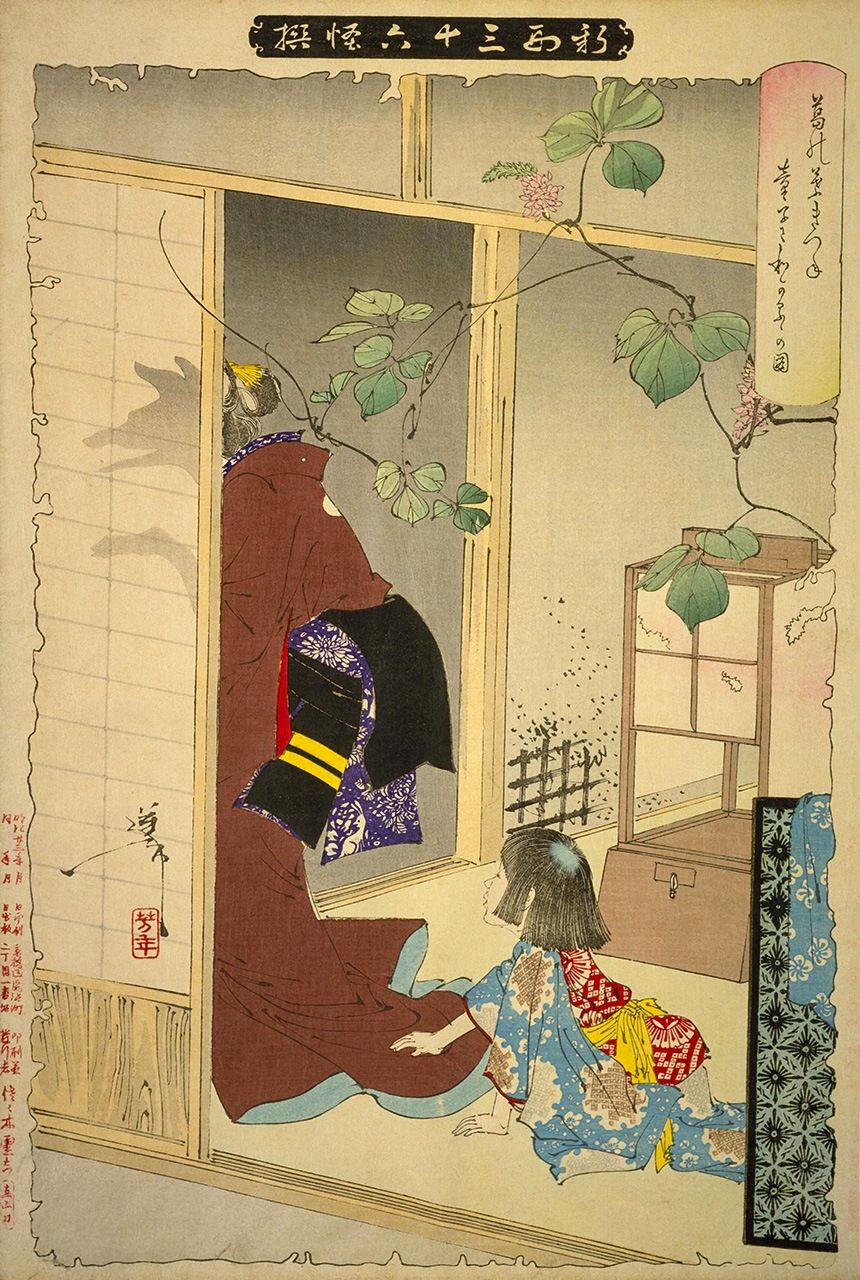
Abe no Seimei: Building the Legend of the Mystical Master
History Culture Entertainment- English
- 日本語
- 简体字
- 繁體字
- Français
- Español
- العربية
- Русский
A Legendary Figure
Abe no Seimei is famous as a legendary figure with extraordinary powers, able to control fierce gods and ward off evil spirits. He was a real person, however, who worked for the government of his time, and according to records, he died in his eighties in the year 1005.

Abe no Seimei as depicted in the nineteenth-century biographical collection Zenken kojitsu. In the foreground is the spirit he controls. (Courtesy National Diet Library)
Seimei worked for the Bureau of Onmyō, which dealt with onmyōdō, a system based on Chinese theories of yin and yang, as well as the five elements. The bureau also drew up calendars, conducted astronomy, and measured the time using a water clock.
Basically, onmyōdō was a form of fortune-telling, and the bureau would perform tasks like choosing an auspicious day for an imperial wedding ceremony or interpreting whether strange events like a snake entering a residence were omens of future events. It also gave advice on taboos regarding when it was best not to perform certain actions or travel in a particular direction.
Seimei had an outstanding reputation for his astronomical observations of the weather and heavenly bodies, and the accuracy of his divination and taboo management. He was praised for his ability in the diary of the court noble Fujiwara no Yukinari, while other diaries and historical records show how often he was involved in major events.
For example, he was recorded as choosing the dates for Emperor Kazan to ascend the throne and for Shōshi, the daughter of Fujiwara no Michinaga, to become the official consort of Emperor Ichijō. He is also said to have cured Emperor Ichijō of sickness through ritual purification and to have made it rain through prayer after more than 30 days of dry weather.

Abe no Seimei visits a sick monk at Miidera in Shiga Prefecture in Naki Fudō engi (Legend of the Weeping Fudō). (Courtesy Nara National Museum)
Trusted by the Powerful
Taizan Fukun (Lord Taizan) was a central deity of onmyōdō, presiding over life and death. According to one theory he was an attendant of King Enma, the ruler of hell. Seimei was reputed for his ability to cast spells that allowed him to appeal to Lord Taizan.
The picture at the top of this article shows Lord Taizan, as well as attendants of hell summoned by Seimei. Naturally, this was a work produced in later times, but it conveys how the aristocrats of his day believed in Seimei’s powers, due to his close association with Lord Taizan.
After winning the trust of the powerful statesman Fujiwara no Michinaga, from around 985 or 986 Seimei was seen as the greatest practitioner of onmyōdō. He was in his sixties by then, and had retired from the bureau, but still conducted divinations and incantations for individual aristocrats. In 993, he rose to the lower grade of the junior fourth rank, which was that of a relatively high official. The historian Shigeta Shin’ichi suggests his income may have been equivalent to hundreds of millions of yen in contemporary terms.
Forgotten Years
Seimei was forgotten for some years after his death, due to rivalry between the Abe and Kamo clans. Kamo no Yasunori, who is said to have been Seimei’s teacher, was the first onmyōdō practitioner to achieve the lower grade of the junior fourth rank, a precedent that made it easier for Seimei to follow. After Yasunori died, Seimei was seen as the new number one, and even as surpassing his former teacher, which must have ruffled Kamo feathers.
Yasunori’s son Mitsuyoshi was 18 years younger than Seimei, and the historian Tanaka Takako says he was just as brilliant. He also worked in the Bureau of Onmyō, preparing the calendar. Mitsuyoshi sought to burnish the Kamo clan’s reputation after the death of Seimei. These efforts were apparently successful, and by the start of the twelfth century, the Kamo clan was seen as naturally associated with onmyōdō.
Tanaka introduces a theory that the Abe clan then deployed a strategy of clouding Seimei in a veil of mystery. This became connected with the increased power of retired emperors, who effectively ruled the state in the twelfth century, creating political upheaval through a dual power structure shared with the actual emperor of the time. The theory suggests that this brought a rise in the number of restrictive taboos.
Consequently, there was a rediscovery of Seimei, who was reputed for his deep understanding of taboos. A string of tales exaggerating his abilities appeared, building him up as a legendary hero.
Rising Reputation
In the medieval tale collection Konjaku monogatari, Abe no Seimei is described in one story as having powers not inferior to the great ancients. This was an age that venerated the past, so such a description was the highest of praise.
The same story seems to say that Seimei was Yasunori’s successor, in a blow to the honor of the Kamo descendants. The movement to elevate Seimei’s reputation appears to have influenced the collection.
Later, thirteenth-century collections present Seimei as a hero protecting the imperial court, with stories about him delivering Michinaga from a curse.
The 1662 book Abe no Seimei monogatari (The Tale of Abe no Seimei) built him up to his now legendary proportions with anecdotes about how he learned from crows talking that the emperor’s sickness was due to a curse, and that his mother was a deity incarnated as a fox.

A young Abe no Seimei appears with his fox mother in Tsukioka Yoshitoshi’s Kuzunoha-gitsune dōji no wakaruru no zu (The Fox-Woman Kuzunoha Leaving Her Child). (Courtesy National Diet Library)
(Originally published in Japanese on June 11, 2024. Banner image: Fudō riyaku engi emaki [Legend of the Blessings Bestowed by Fudō], depicting Abe no Seimei, at right, conducting an incantation. Courtesy ColBase.)
